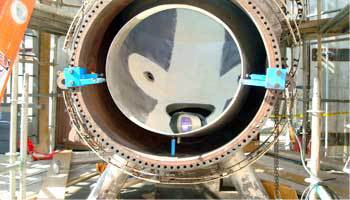In the past, mention of turbines first appeared in the earliest times of Greece in the history of the world and was described as a toy. In the fifteenth century, a writer described a steam engine Taki al- Din in Ottoman Egypt. The Renaissance period saw the idea of the turbine introduced in the writings of the Italian researcher Giovanni Branca (1629) and the English John Wilkins in England.
These discoveries were later used in the invention that has become known by the name the steam connector. Such discoveries acted as empowering solutions for generations to come.

Today, the steam turbine was developed around 1884, by the engineer Sir Charles Parson. The initial model engine was linked to the dynamo that produced 7.5 (kW) (10 K) electrical power.
The turbine as a source of electricity was only used after the revolutions and naval wars in transport maritime that greatly increased its usage.
Parsons' invention was quickly upgraded and improved. It was then scaled to Westinghausem American George, who simultaneously was able to spread. Parsons immediately sourced this turbine to the major power generators, and their capacity was increased by many times, even reaching 50 power.
In order to work efficiently with steam, was later created other kinds of turbines. The engineer Gustav de Lava, for instance, increased the speed of steam prior to it beginning to fall over the shoulder blade, which then powered generators.
De Laval's impulse turbine may not be pressure-resistant, however it's a simple and cost-effective solution for many businesses. This turbine is thus capable to handle any pressure however, it can have an effect on the performance of this turbine. Different models of turbines are designed to efficiently make use of steam produced.